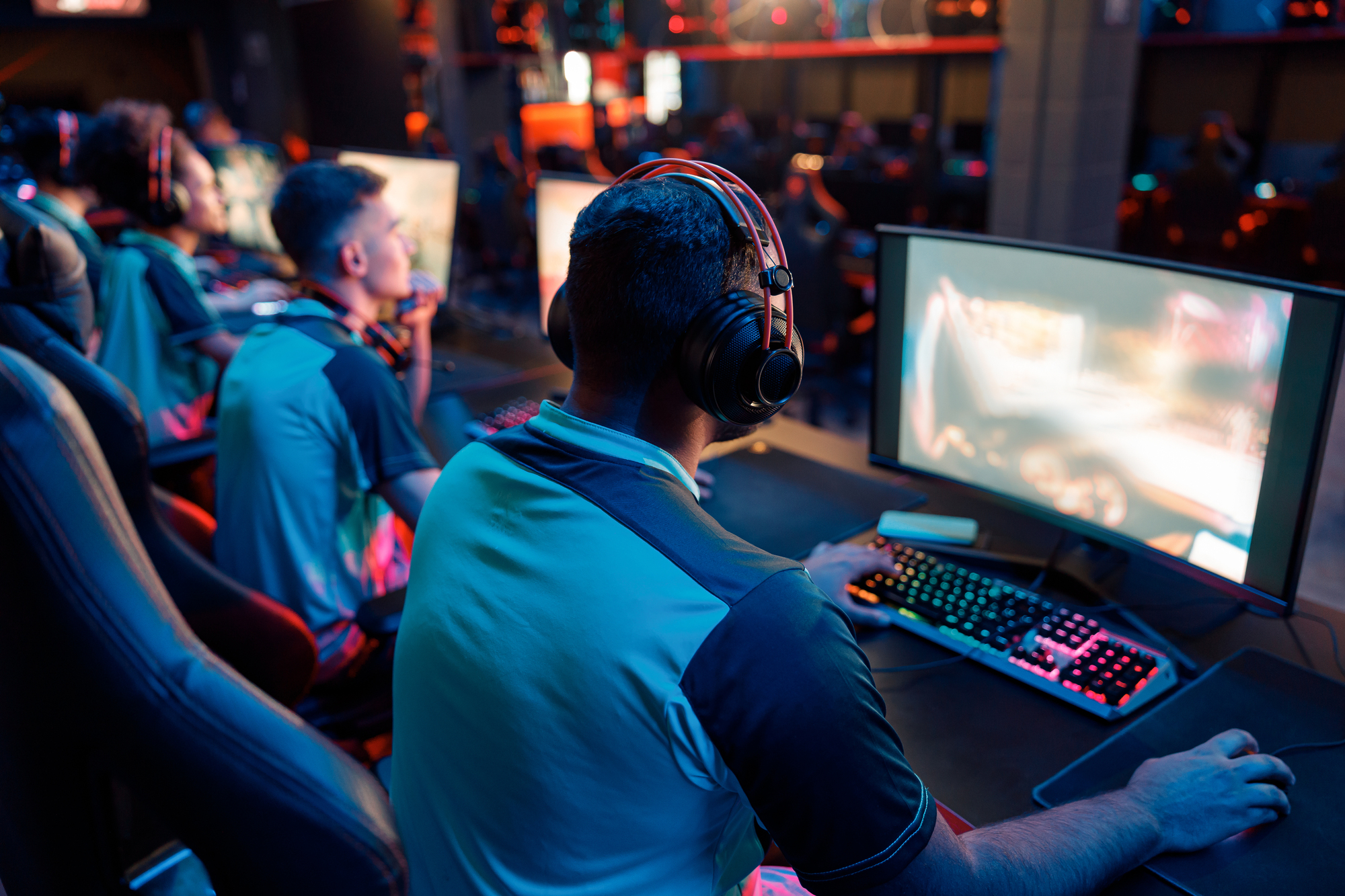Gaming is revolutionizing the sports landscape, blurring the lines between digital and traditional competitions.
Esports, competitive video gaming events, have surged in popularity over the past decade, attracting millions of viewers worldwide.
This surge in esports viewership is reshaping how people consume sports content and challenging the dominance of conventional athletic broadcasts.
The accessibility of esports contributes to its growing appeal. Unlike traditional sports that often require specific venues or equipment, esports can be enjoyed from virtually anywhere with an internet connection.
This global reach allows for a diverse and expansive audience, transcending geographical boundaries and time zones.
The demographics of esports viewers skew younger compared to traditional sports audiences, reflecting a generational shift in entertainment preferences.
As digital natives come of age, they bring with them a familiarity and enthusiasm for gaming culture that translates into viewership for competitive gaming events.
This trend is prompting traditional sports organizations to adapt and incorporate elements of gaming into their strategies to engage with younger fans.
The Rise of Esports and Its Influence on Viewership Patterns
Esports has experienced rapid growth, attracting millions of viewers worldwide and reshaping entertainment consumption habits. This surge has impacted traditional sports viewership and created new revenue streams in the gaming industry.
Esports Viewership Trends and Growth
Esports viewership has skyrocketed in recent years. In 2020, global esports audiences reached 495 million people.
Online streaming platforms like Twitch and YouTube Gaming have played a crucial role in this expansion.
Popular esports titles such as League of Legends, Dota 2, and Fortnite draw massive audiences. The League of Legends World Championship 2020 peaked at 3.8 million concurrent viewers, showcasing the immense appeal of competitive gaming.
The COVID-19 pandemic accelerated esports growth. With traditional sports disrupted, many fans turned to esports for entertainment. This shift introduced esports to new demographics and solidified its position in the entertainment landscape.
Impact on Traditional Sports
Esports’ rise has influenced traditional sports viewership patterns. Young audiences, in particular, are increasingly drawn to esports, potentially affecting future viewership of conventional sports.
Traditional sports organizations have taken notice. The NBA 2K League, a professional esports league co-founded by the NBA, exemplifies how traditional sports are adapting to the digital era.
Some traditional sports events have seen declining viewership, especially among younger demographics. This trend has prompted sports leagues to invest in esports and digital engagement strategies to maintain audience interest.
The gaming industry’s revenue has grown significantly due to esports. Sponsorships, advertising, and media rights deals have become substantial income sources, rivaling those of some traditional sports.
Technological Advancements Reshaping Sports Consumption
Streaming platforms, artificial intelligence, and virtual reality are transforming how fans engage with sports content. These technologies offer new ways to watch and interact with games, enhancing the viewing experience.
Streaming Platforms and Accessibility
Twitch and YouTube have revolutionized sports broadcasting. These platforms allow fans to watch games live from anywhere with an internet connection.
They also provide interactive features like live chat, enabling viewers to discuss events in real-time.
Streaming services offer flexible viewing options. Fans can access content on various devices, including smartphones, tablets, and smart TVs. This flexibility caters to different viewer preferences and schedules.
Many streaming platforms now offer personalized content recommendations. These suggestions are based on a user’s viewing history, helping fans discover new sports and events they might enjoy.
The Role of Artificial Intelligence and Virtual Reality
AI is changing how sports data is analyzed and presented. Machine learning algorithms can process vast amounts of game data to generate insights. These insights are used to create graphics and statistics that enhance broadcasts.
Virtual reality is creating immersive sports experiences. VR headsets allow fans to feel like they’re in the stadium, even from their living rooms. This technology offers unique perspectives, such as viewing the game from a player’s point of view.
AI-powered chatbots are improving customer service for sports fans. These bots can answer questions about schedules, scores, and player statistics quickly and accurately.
Economic Impact on the Sports Industry
Gaming’s influence on traditional sports viewership has significant economic ramifications for the industry. The shift in audience preferences is reshaping revenue models and investment patterns.
Revenue Streams and Advertising
The rise of gaming and esports has created new revenue opportunities for the sports industry. Digital platforms are becoming key channels for sports content distribution. By 2025, over 90 million U.S. viewers are expected to stream sports events monthly, up from 57 million in 2021.
This surge in digital consumption is changing advertising strategies. Brands are allocating more budget to digital platforms to reach younger audiences.
Gaming-related content is proving effective in boosting fan engagement. Research shows 51% of Gen Z viewers increased their sports engagement through gaming content, compared to 31% of other age groups.
Investment and Sponsorship Dynamics
The esports sector is attracting substantial investment. A notable example is the $10 million stake purchased in Counter Logic Gaming by New York investors.
Traditional sports organizations are entering the gaming space to diversify their portfolios. They’re creating esports teams and hosting virtual tournaments.
Sponsorship deals are evolving to include both physical and digital elements. Companies are partnering with gaming influencers and esports leagues to reach tech-savvy fans.
This shift is challenging the regional sports network model. Media companies are adapting by offering more flexible, digital-first packages to meet changing viewer preferences.
Shifting Demographics and Fan Engagement
Gaming and esports are reshaping sports viewership, attracting younger audiences and changing how fans interact with their favorite teams and players. This shift impacts traditional sports leagues and broadcasters as they adapt to new viewer preferences and engagement models.
Understanding the New Generation of Sports Fans
Younger viewers gravitate towards fast-paced, interactive content. This trend benefits esports, which offers constant action and opportunities for audience participation.
Traditional sports leagues like the NFL and NBA are taking note, incorporating elements from gaming culture to appeal to this demographic.
Social media plays a key role in fan engagement for both esports and traditional sports. Platforms like Twitter and Instagram allow fans to connect directly with athletes and teams, fostering a sense of community. This real-time interaction is especially popular among younger fans who expect instant access to information and behind-the-scenes content.
Fantasy sports and sports betting have also grown in popularity, further blurring the lines between gaming and traditional sports fandom. These activities keep fans engaged beyond game day and create new revenue streams for leagues and broadcasters.
Integration of Traditional and Electronic Sports
Major sports networks like ESPN are increasingly covering esports events alongside traditional sports coverage.
This integration exposes esports to a wider audience while helping traditional sports retain younger viewers.
Cross-promotion between esports and traditional sports is becoming more common.
For example, professional athletes often stream themselves playing video games, while esports teams partner with traditional sports organizations.
These collaborations help both sectors expand their fan bases and increase engagement.
Some traditional sports leagues are launching their own esports competitions.
The NBA 2K League and FIFA eWorld Cup are prime examples of how traditional sports bodies are embracing gaming to stay relevant and attract new fans.
The boundaries between esports and traditional sports continue to blur in terms of production value and viewership.
Major esports events now rival traditional sports broadcasts in terms of scale and spectacle. Some tournaments draw global audiences comparable to the FIFA World Cup or Super Bowl.












